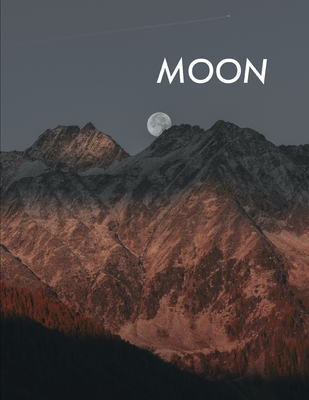You are here
Back to topMoon (Paperback)
$34.49
This item is not available this time
This item is not available this time
Description
The Moon is Earth's only natural satellite. At about one-quarter the diameter of Earth (comparable to the width of Australia), it is the largest natural satellite in the Solar System relative to the size of its planet and the fifth largest satellite in the Solar System overall (larger than any dwarf planet). Orbiting Earth at an average distance of 384,400 km (238,900 mi), or about 30 times Earth's diameter, its gravitational influence slightly lengthens Earth's day and is the main driver of Earth's tides. The Moon is classified as a planetary-mass object and a differentiated rocky body, and lacks any significant atmosphere, hydrosphere, or magnetic field. Its surface gravity is about one-sixth of Earth's (0.1654 g); Jupiter's moon Io is the only satellite in the Solar System known to have a higher surface gravity and density.The Moon's orbit around Earth has a sidereal period of 27.3 days, and a synodic period of 29.5 days. The synodic period drives its lunar phases, which form the basis for the months of a lunar calendar. The Moon is tidally locked to Earth, which means that the length of a full rotation of the Moon on its own axis (a lunar day) is the same as the synodic period, resulting in its same side (the near side) always facing Earth. That said, 59% of the total lunar surface can be seen from Earth through shifts in perspective due to libration.The most widely accepted origin explanation posits that the Moon formed about 4.51 billion years ago, not long after Earth, out of the debris from a giant impact between the planet and a hypothesized Mars-sized body called Theia. It then receded to a wider orbit because of tidal interaction with the Earth. The near side of the Moon is marked by dark volcanic maria ("seas"), which fill the spaces between bright ancient crustal highlands and prominent impact craters. Most of the large impact basins and mare surfaces were in place by the end of the Imbrian period, some three billion years ago. The lunar surface is relatively non-reflective, with a reflectance just slightly brighter than that of worn asphalt. However, because it has a large angular diameter, the Full Moon is the brightest celestial object in the night sky. The Moon's apparent size is nearly the same as that of the Sun, allowing it to cover the Sun almost completely during a total solar eclipse.The first artificial object to reach the Moon was the Soviet Union's Luna 2 uncrewed spacecraft in 1959; this was followed by the first successful soft landing by Luna 9 in 1966. The only human lunar missions to date have been those of the United States' NASA Apollo program, which conducted the first crewed lunar orbiting mission with Apollo 8 in 1968. Beginning with Apollo 11, six human landings took place between 1969 and 1972. These and later uncrewed missions returned lunar rocks which have been used to develop a detailed geological understanding of the Moon's origins, internal structure, and subsequent history. Both the Moon's natural prominence in the earthly sky and its regular cycle of phases as seen from Earth have provided cultural references and influences for human societies and cultures throughout history. Such cultural influences can be found in language, calendar systems, art, and mythology.
